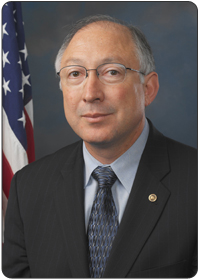The city of the future will rely on the absolutely oldest source of power in the solar system… the sun.

Plans for Babcock Ranch, a 19,500-home city powered entirely by zero-emission solar energy northeast of Fort Myers in Southwest Florida, were recently announced by developer Kitson & Partners as the world’s first city running only on the power of the sun. This Miami Herald story has details:
It will include the world’s largest photovoltaic power plant, which will be operated by Florida Power & Light. Buildings will be certified green and surrounded by thousands of acres of open space.
”We’re out to prove that it works economically,” developer Syd Kitson told The Miami Herald. “And it’s the right thing to do for the long-term solutions in this country.”
Though researchers are working to create storage capability for sunlight-generated power, solar electricity at present is available only during daytime hours.
Kitson’s concept is that FPL’s 75-megawatt solar generator will produce more power for the state’s electric grid while the sun shines than the city will use in 24 hours. That means Babcock Ranch will have to rely on conventional power sources for the evening, but its net effect will a solar-only city.
The solar panels will sit on 350 acres within the development. More than half of the city’s 17,000 acres will be permanently protected as greenways and open space, the developer said, and will adjoin the 73,000-acre Babcock Ranch Preserve that has been purchased by the state.
The city is expected to cost around $300 million to build, and Florida Power & Light says it will add just 31 cents to the average consumer’s bill to pay for it. Considering the city is expected to add 20,000 permanent jobs plus all of the thousands of temporary jobs during construction, it seems like a great investment to me. And besides, you can only use all that sunshine for just tanning for so long!


 The State of Iowa is making a major investment to grow algae for biofuel at a southwest Iowa ethanol plant.
The State of Iowa is making a major investment to grow algae for biofuel at a southwest Iowa ethanol plant. A Longview, Texas-based maker of terminal tractors has introduced a hybrid electric version of the vehicle.
A Longview, Texas-based maker of terminal tractors has introduced a hybrid electric version of the vehicle. Although the ethanol plant said it needed $10 million to stay in business just four months ago, Show Me Ethanol in Carrollton, Mo. has reached a loan agreement and will afloat after raising $5.9 million from shareholders.
Although the ethanol plant said it needed $10 million to stay in business just four months ago, Show Me Ethanol in Carrollton, Mo. has reached a loan agreement and will afloat after raising $5.9 million from shareholders.  The University of Georgia will soon be collaborating with
The University of Georgia will soon be collaborating with  “This project allows us to expand our internal and collaborative plant breeding activities in a region where we believe the industry will have a strong presence,” said Ceres plant breeding director Jeff Gwyn, Ph.D. “There’s a lot of headroom for improvement and I’m confident that working together we can continue to drive up yields at a robust pace,” he said.
“This project allows us to expand our internal and collaborative plant breeding activities in a region where we believe the industry will have a strong presence,” said Ceres plant breeding director Jeff Gwyn, Ph.D. “There’s a lot of headroom for improvement and I’m confident that working together we can continue to drive up yields at a robust pace,” he said. 
 developed for the liquefaction of starch-based mashes and slurries specifically for use in food and beverage applications. The enzyme improves saccharification and fermentation efficiency and consistency.
developed for the liquefaction of starch-based mashes and slurries specifically for use in food and beverage applications. The enzyme improves saccharification and fermentation efficiency and consistency. BP has been marketing itself as “Beyond Petroleum” for several years now but it appears that
BP has been marketing itself as “Beyond Petroleum” for several years now but it appears that  Wind turbines churning off the East Coast have the potential to replace nearly all of the coal-fired power plants. That bold pronouncement comes from U.S. Secretary of the Interior Ken Salazar during a recent public hearing in Atlantic City, New Jersey.
Wind turbines churning off the East Coast have the potential to replace nearly all of the coal-fired power plants. That bold pronouncement comes from U.S. Secretary of the Interior Ken Salazar during a recent public hearing in Atlantic City, New Jersey. While the biodiesel production business has been growing in the U.S., it has also grown in popularity overseas, especially in Southeast Asia. That has led a group representing commerce interests in Indonesia to visit a Southern California biodiesel equipment manufacturer.
While the biodiesel production business has been growing in the U.S., it has also grown in popularity overseas, especially in Southeast Asia. That has led a group representing commerce interests in Indonesia to visit a Southern California biodiesel equipment manufacturer.